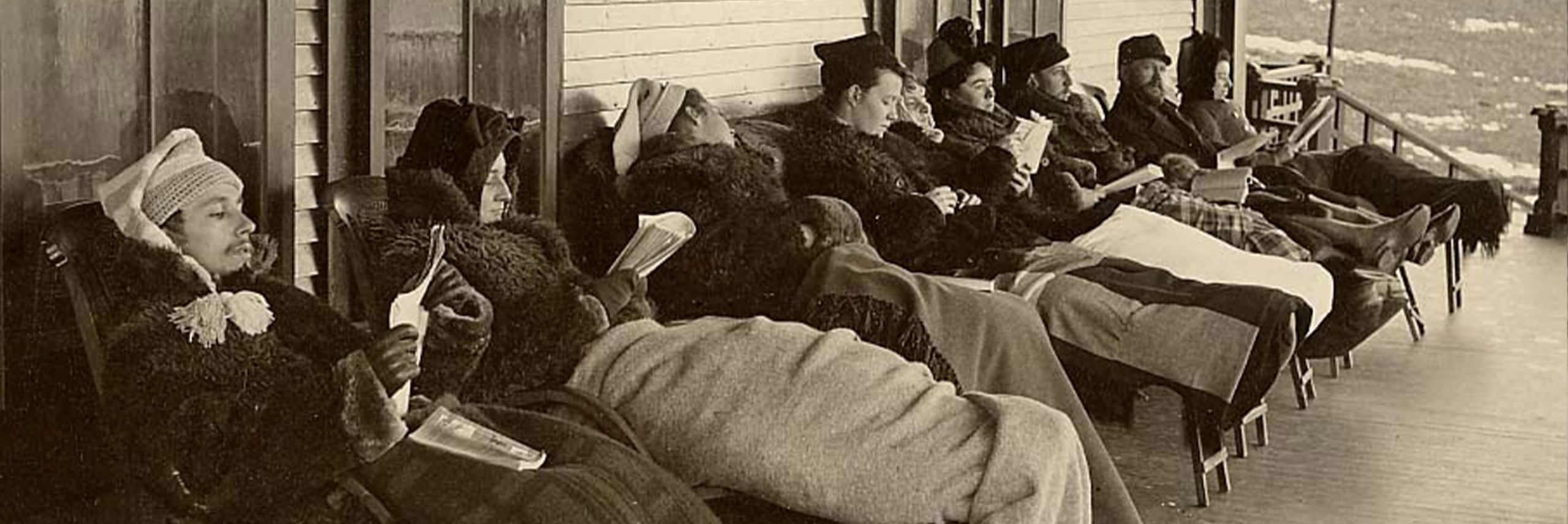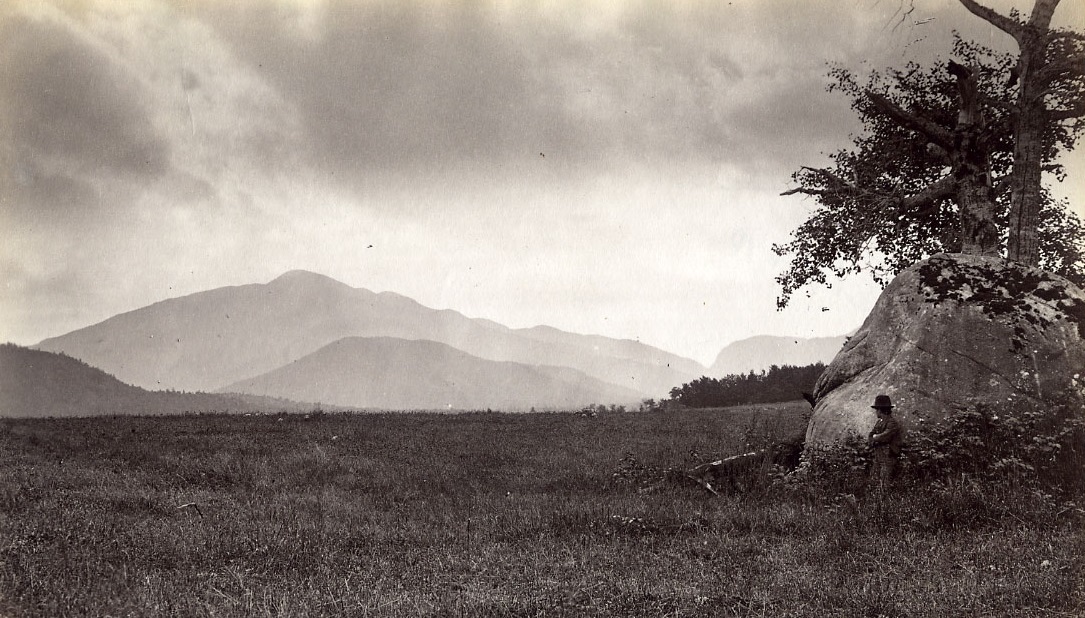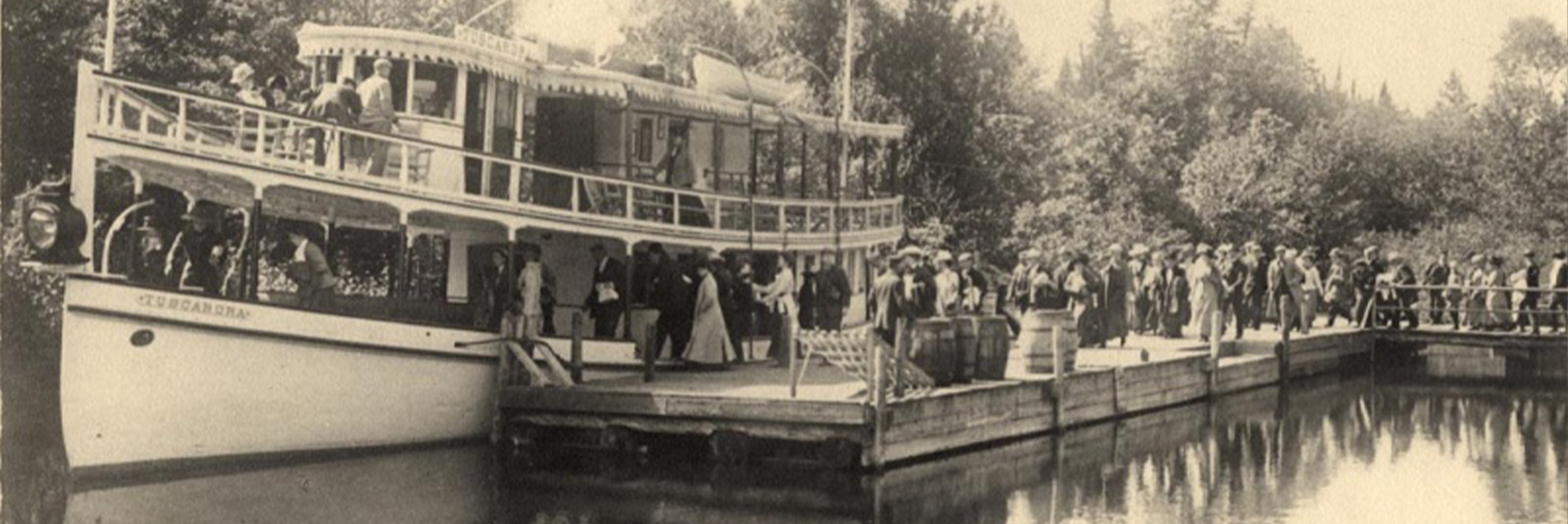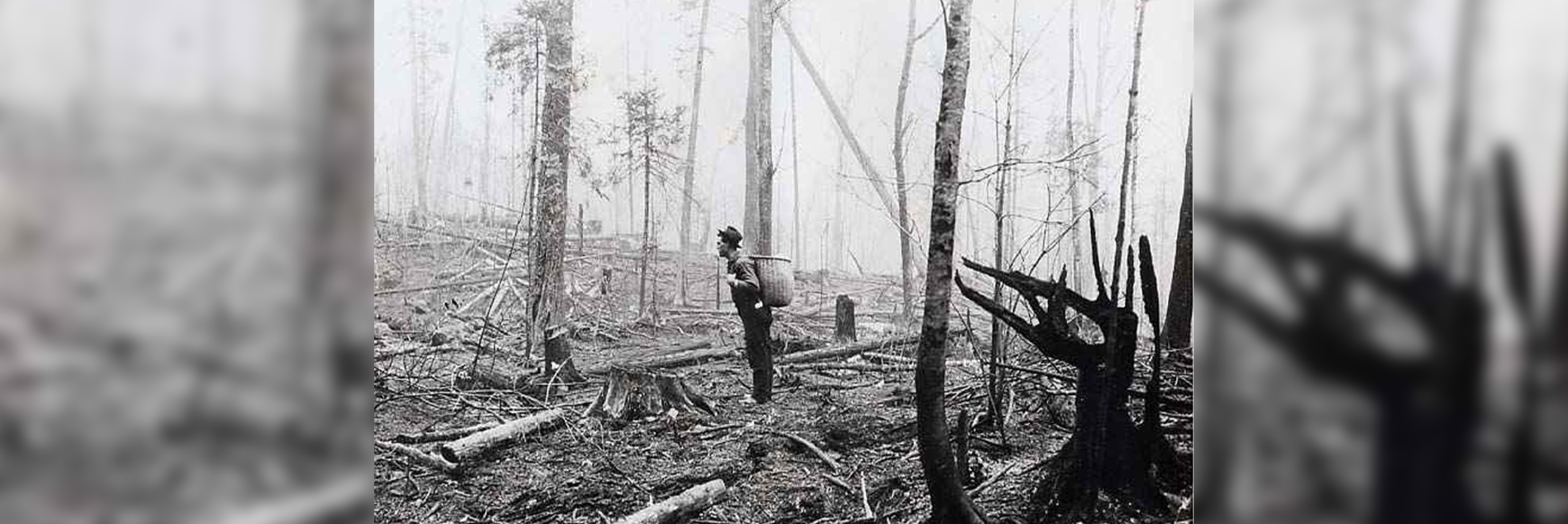An Adirondack Cast Iron Cookstove
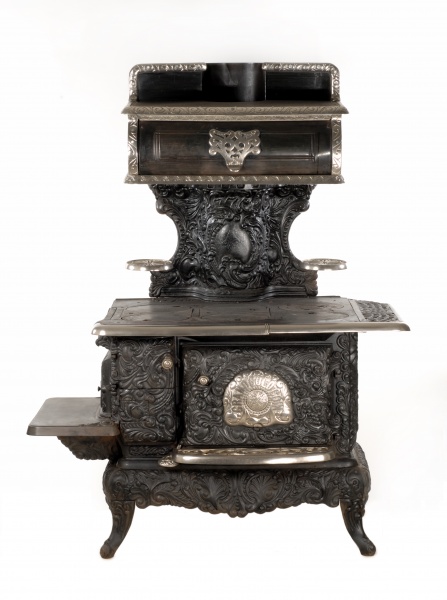
To My Old Cookstove
Oh! My old kitchen cookstove, to time now surrendered,
How well I remember the day you were new.
As so proud in your newness, you stood in my kitchen
So black and so shiny, and fair to my view.
How oft, by your side, in the years that have vanished
I have held my firstborn to your genial heat
And the years in their passing, added still others
‘Till your hearth was surrounded with dear little feet…
Lucelia Mills Clark, a farm wife from Cranberry Lake, wrote this ode to her cast iron cook stove in 1899. Her verse reflects the iconic status of the 19th-century cook stove in the American imagination as the heart of the home, a place where families gathered and generations spent time together when life was simpler.
Although we (and Lucelia) romanticize iron cookstoves as a focus for family gatherings, not everyone was equally enamored of them when they were introduced. Beginning in the 1840s, critics characterized them as poor substitutes for the family hearth. The beauty of a log on the fire was lost, hidden away in an iron firebox, and the pleasure of gathering around to spend time with family was diminished. Iron stoves were also thought to exude dangerous gasses into the air and into food. The heat they generated could be overwhelming, and a source of headaches and stupor. Large and heavy, they could also be unstable, collapsing onto the floor while in use, sending hot ash, fire, and boiling liquids onto floors, walls, and unlucky bystanders.
In spite of these early reservations and limitations, the first iron cookstoves came into common use in the United States in the early 19th century. They used less fuel and generated less smoke than did cooking over a fire. To appeal to potential buyers, however, many early models mimicked fireplace cooking. They were low to the ground and designed so that the fire inside was visible, mimicking a traditional hearth.
As stoves became more popular, manufacturers developed new designs to cater to consumer needs. Low height prevented strain in lifting heavy iron pots. Bilevel stoves allowed cooks to boil on a lower level and use the oven on eye level to reduce unnecessary stooping. Baking compartments became larger, and many models included a water reservoir, which would keep hot water at hand for cleaning and bathing. Stoves also allowed cooks to prepare several kinds of foods at once, a near impossibility on an open fire.
By the end of the 19th century, cookstoves were beginning to look more and more alike in terms of their utilitarian features. Although ease of use and fuel economy were still major considerations for consumers, the decorative value of the stove became an important selling point.
The Adirondack Museum’s “Grand Gold Coin” model, manufactured by Bussey and McLeod in Troy, New York after the turn of the 20th century, features elaborate scrollwork with leaves and basketweave motifs accented with nickel plate. Ornamentation aside, its six burners, elevated warming oven, and rotating warming grills are typical of most models of its time.
Cooking with a stove like this required practice. Temperature was regulated in part according to the quantity and type of wood burned. Different types of wood burn at different temperatures, and some burn longer than others. Birch made a quick, hot fire, maple and beech created a longer-lasting fire, and oak was used for a slow, hot fire. At night, the fire was banked with ashes and the coals used to start a flame in the morning.
Three or four dampers and grates on the sides and rear of the stove also allowed cooks to control airflow into the firebox to adjust the temperature. The hottest burner was usually center rear. One moved pots around the surface of the cookstove to boil or fry at the right temperature. Although stoves were engineered for mass production, no two operated exactly alike. Idiosyncratic stoves meant each cook needed to learn how to use her particular oven.
Keeping the stove clean and rust-free was time-consuming and unpleasant. Household cooks scraped away debris in the firebox on a regular basis and applied stove polish, a black, waxy substance, each day- a particularly onerous task.
In winter, the cookstove also served to heat the home, and the kitchen was often where the family gathered during cold winter days. Large iron stoves could be much less pleasant in summer when the heat radiating from the cast iron could be overwhelming. Many families moved their stoves in the spring to get them out of the house, a major undertaking as the iron stoves were quite heavy.
By the 1930s and 1940s, many Adirondack families were replacing the old wood or coal-burning cookstove with a gas or electric model. Easier to clean and use, and no longer needed for heating the home, the iron cook stove became a thing of the past.


